
Dear Brother is a Japanese manga series by Riyoko Ikeda. It was adapted into an anime series that aired on the channel NHK-BS2 from July 14, 1991 to May 31, 1992.
Sweet Valley High is a series of young adult novels attributed to American author Francine Pascal, who presided over a team of ghostwriters to produce the series. The books chronicle the lives of identical twins Jessica and Elizabeth Wakefield, who live in the fictional Sweet Valley, California, a suburb near Los Angeles. The twins and their friends attend Sweet Valley High.

Maud Hart Lovelace was an American writer best known for the Betsy-Tacy series.
The Betsy-Tacy books are a series of semi-autobiographical novels by American novelist and short-story writer Maud Hart Lovelace (1892-1980), which were originally published between 1940 and 1955 by the Thomas Y. Crowell Co. The books are now published by HarperCollins. The first four books were illustrated by Lois Lenski and the remainder by Vera Neville.

Betsy-Tacy (1940) is the first volume in the Betsy-Tacy series by Maud Hart Lovelace.

Betsy's Wedding (1955) is the tenth and final book in the Betsy-Tacy series written by Maud Hart Lovelace. Set in Minneapolis, Minnesota, the book tells the story of the early married life of the main character, Betsy Ray, and her high-school sweetheart, Joe. The characters of Tacy Kelly and Tib Muller also recur in this novel, as they did in all the novels covering the high-school years. The book, along with the entire Betsy-Tacy and Deep Valley series, was republished in 2000 by HarperTrophy with a new cover art illustrated by Michael Koelsch.
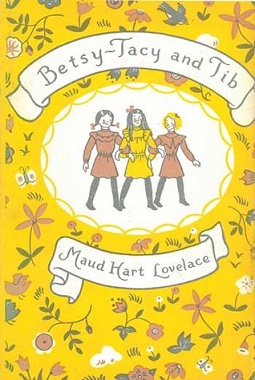
Betsy-Tacy and Tib (1941) is the second volume in the Betsy-Tacy series by Maud Hart Lovelace. The book, along with the entire Betsy-Tacy and Deep Valley series, was republished in 2000 by HarperTrophy with a new cover art illustrated by Michael Koelsch.

Betsy and Tacy Go Over the Big Hill (1942) is the third volume in the Betsy-Tacy series by Maud Hart Lovelace. The book, along with the entire Betsy-Tacy and Deep Valley series, was republished in 2000 by HarperTrophy with a new cover art illustrated by Michael Koelsch.

Betsy and Tacy Go Downtown (1943) is the fourth volume in the Betsy-Tacy series by Maud Hart Lovelace. The book, along with the entire Betsy-Tacy and Deep Valley series, was republished in 2000 by HarperTrophy with a new cover art illustrated by Michael Koelsch.

Heaven to Betsy (1945) is the fifth volume in the Betsy-Tacy series by Maud Hart Lovelace. Heaven to Betsy, describing Betsy's first year in high school, is written for an older age group than the earlier Betsy-Tacy books. The book, along with the entire Betsy-Tacy and Deep Valley series, was republished in 2000 by HarperTrophy with a new cover art illustrated by Michael Koelsch.
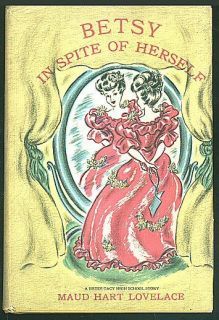
Betsy in Spite of Herself (1946) is the sixth volume in the Betsy-Tacy series by Maud Hart Lovelace. The book, along with the entire Betsy-Tacy and Deep Valley series, was republished in 2000 by HarperTrophy with a new cover art illustrated by Michael Koelsch.

Betsy and Joe (1948) is the eighth volume in the Betsy-Tacy series by Maud Hart Lovelace. This installment spans the title characters' senior, or twelfth grade, year in high school. The book, along with the entire Betsy-Tacy and Deep Valley series, was republished in 2000 by HarperTrophy with a new cover art illustrated by Michael Koelsch.
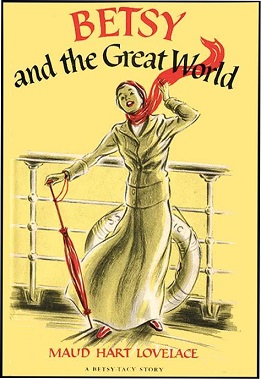
Betsy and the Great World (1952) is the ninth volume in the Betsy-Tacy series of children's fiction by Maud Hart Lovelace. The book, along with the entire Betsy-Tacy and Deep Valley series, was republished in 2000 by HarperTrophy with a new cover art illustrated by Michael Koelsch.
The California Diaries series is a spin-off of Ann M. Martin's The Baby-Sitters Club. All fifteen novels are written as first-person journals. The premise of the Diaries is that they are a school project; all students at their school must keep a journal, with the contents and method left up to them.
The Mother-Daughter Book Club is a series of children's novels written by Heather Vogel Frederick. The books center around the lives of five different preteens, and eventually teenage girls who become best friends because of the book club that their mothers start. The girls live in a slightly fictionalized Concord, Massachusetts.
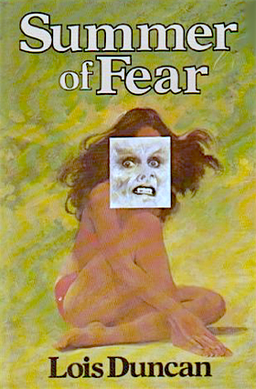
Summer of Fear is a 1976 American horror novel by Lois Duncan. The plot follows a teenaged girl who suspects her recently orphaned cousin is practicing witchcraft. The novel was adapted into a 1978 film by Wes Craven.
Grace Harlowe is the protagonist and eponym of four series of books for girls, published by Altemus between 1910 and 1924. At least some volumes were reprinted by Saalfield Publishing. The High School Girls Series, College Girls Series, Grace Harlowe Overseas Series, and Grace Harlowe Overland Riders Series were written by Josephine Chase, under the pseudonym Jessie Graham Flower.
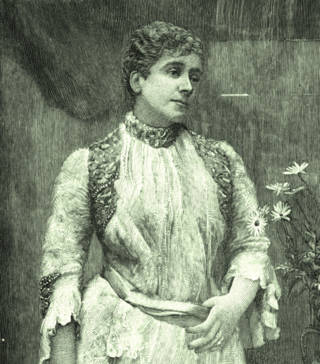
Julia A. Ames was an American journalist, editor and temperance reformer. She served as associate editor of the Woman's Temperance Publishing Association's Union Signal. Ames died in 1891 at the age of 30. The year after her death, the journalist and spiritualist W. T. Stead published automatic writing which was said to have been sent by Ames to her friend. Stead also created "Julie's Bureau" to allow others to communicate with the dead.

Kathleen Palmer Hart Bibb Foster was an American concert singer and voice teacher. She was also the model for the character "Julia Ray" in the popular Betsy-Tacy book series, written by her younger sister.

The Betsy-Tacy Houses are a pair of historic houses in Mankato, Minnesota that were the childhood homes of author Maud Hart Lovelace and her childhood friend, Frances Kenney. Lovelace used these houses as inspiration for the settings of her "Betsy-Tacy" book series. The houses are owned and operated together as a museum by the Betsy-Tacy Society.















